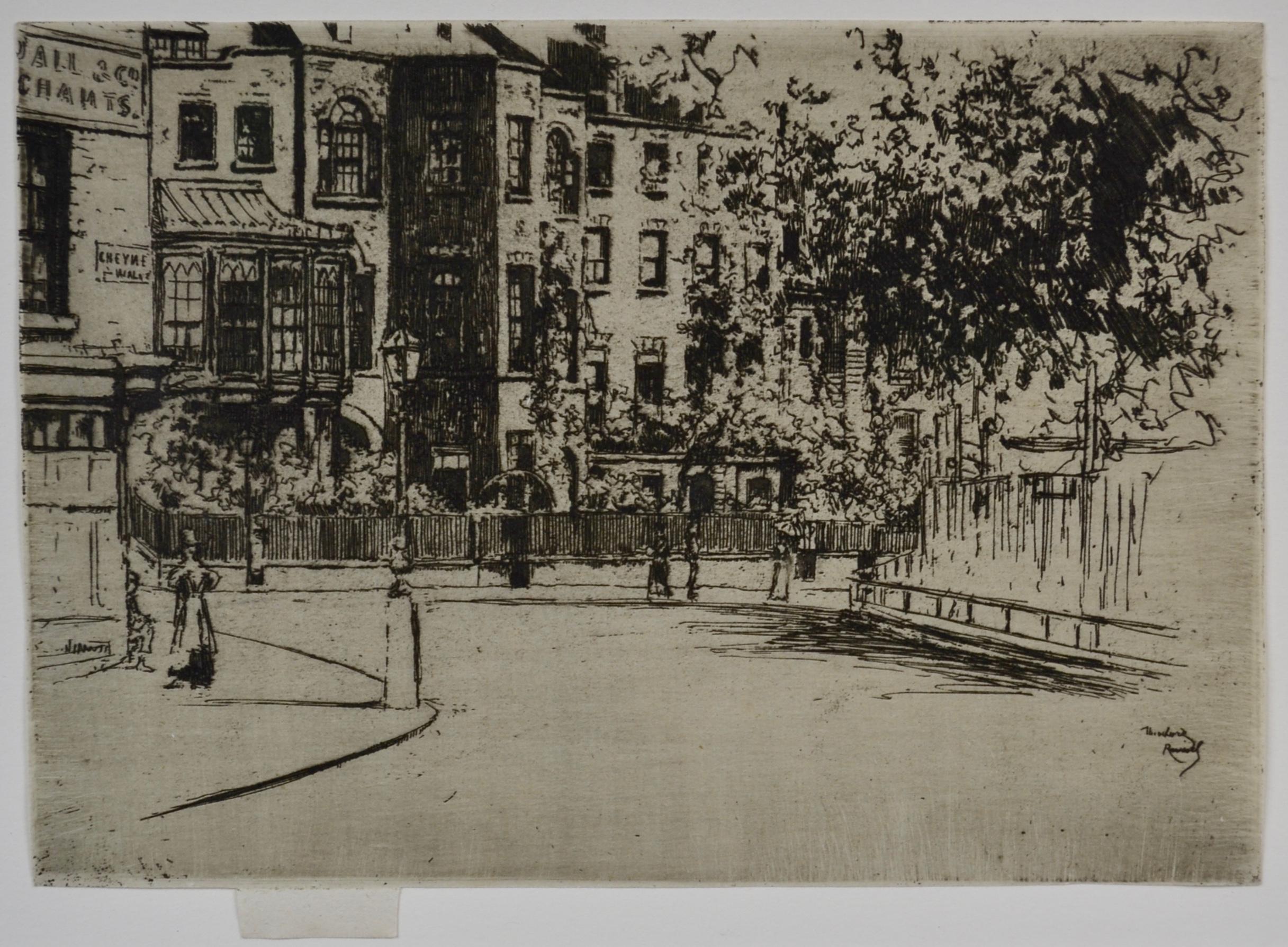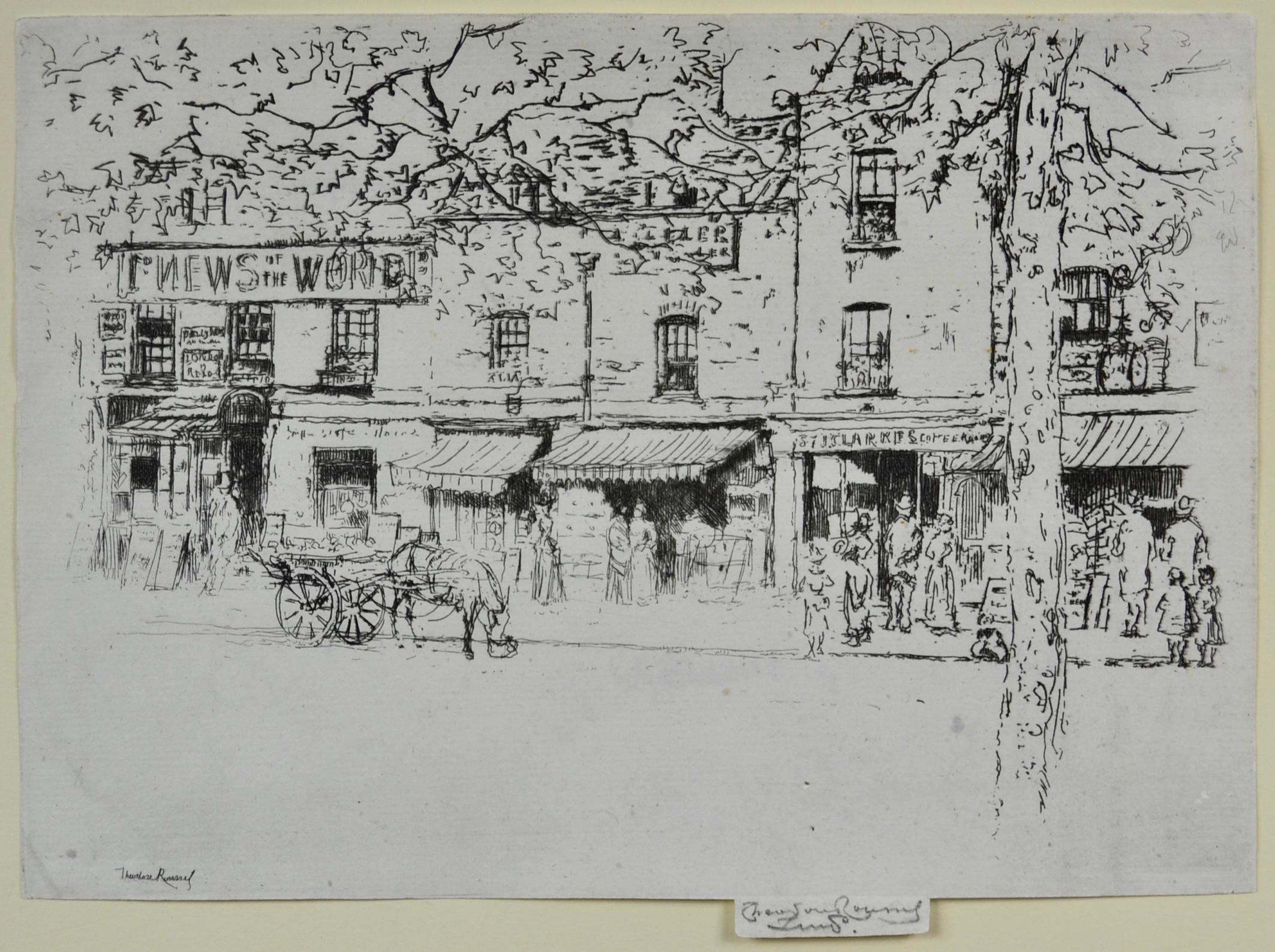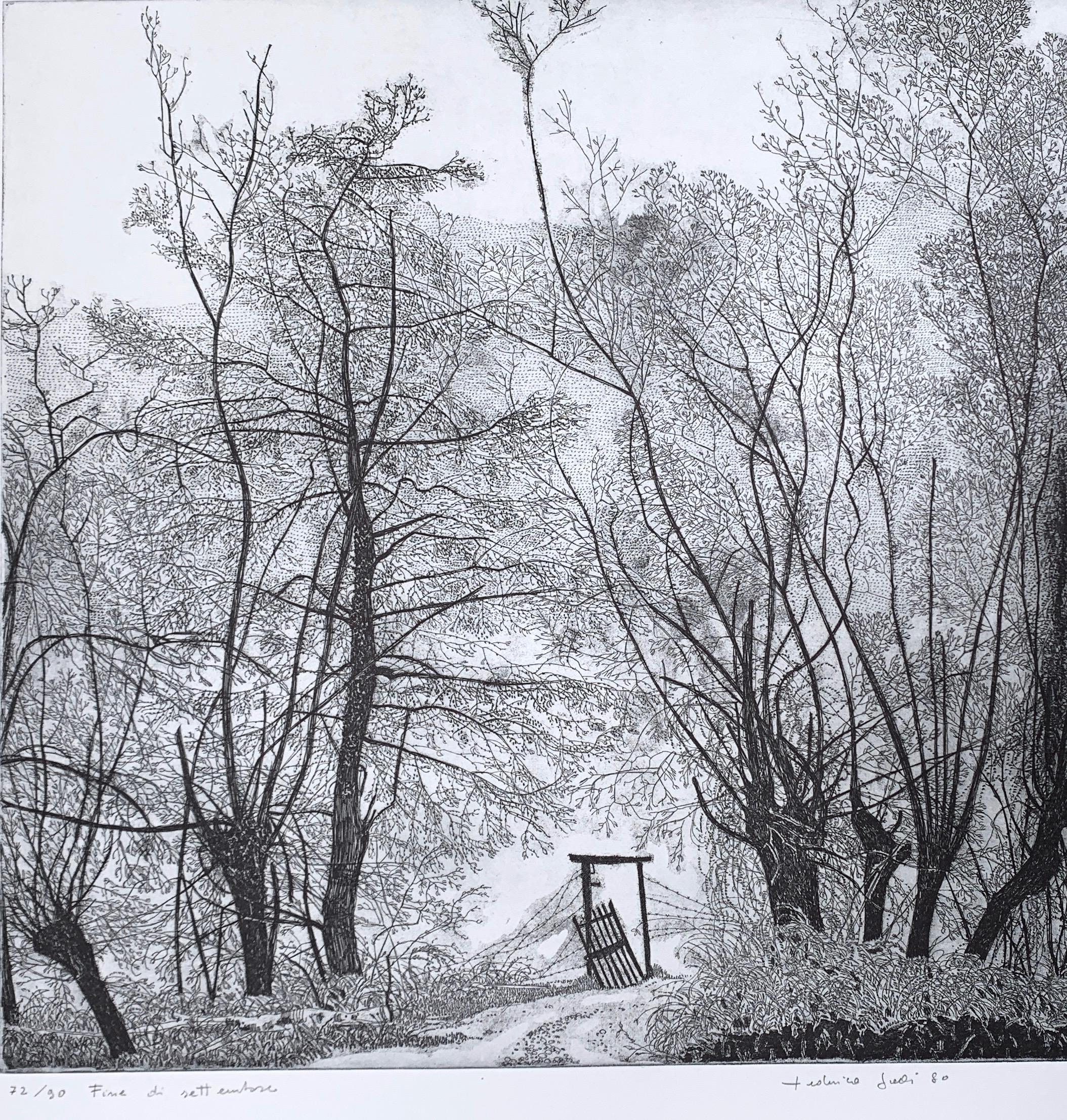Items Similar to G Cooper: 'St Mary's Church, Oxford' etching on paper
Want more images or videos?
Request additional images or videos from the seller
1 of 5
G CooperG Cooper: 'St Mary's Church, Oxford' etching on paperc.1820
c.1820
About the Item
To see our other views of Oxford and Cambridge , particularly suitable for wedding and graduation presents, scroll down to "More from this Seller" and below it click on "See all from this Seller" - or send us a message if you cannot find the view you want.
G. Cooper
St. Mary’s Church, Oxford
Etching
40 x 47 cm
From The Oxford Portfolio a series of thirteen views printed on Sepia paper; very rare.
- Creator:G Cooper (British)
- Creation Year:c.1820
- Dimensions:Height: 15.75 in (40 cm)Width: 18.51 in (47 cm)
- Medium:
- Movement & Style:
- Period:
- Condition:Generally good, with some age toning to paper.
- Gallery Location:London, GB
- Reference Number:1stDibs: LU79538703652
About the Seller
4.8
Gold Seller
These expertly vetted sellers are highly rated and consistently exceed customer expectations.
Established in 2014
1stDibs seller since 2017
277 sales on 1stDibs
Typical response time: <1 hour
- ShippingRetrieving quote...Ships From: London, United Kingdom
- Return PolicyA return for this item may be initiated within 14 days of delivery.
More From This SellerView All
- Richard Beer Oriel College Oxford etching c. 1980By Richard BeerLocated in London, GBTo see our other views of Oxford and Cambridge, scroll down to "More from this Seller" and below it click on "See all from this Seller" - or send us a message if you cannot find the view you want. Richard Beer (1928-2017) Oriel College...Category
1980s Realist Landscape Prints
MaterialsEtching
- 1804 St George's Chapel Windsor Castle printBy Frederick NashLocated in London, GBFrom a series of large and impressive prints of St George's Chapel, the location for the Royal Wedding of Prince Harry and Meghan Markle; to see some ...Category
Early 1800s Realist Landscape Prints
MaterialsEtching, Aquatint
- Richard Beer: Merton College, Oxford etchingBy Richard BeerLocated in London, GBTo see our other Modern British Art, scroll down to "More from this Seller" and below it click on "See all from this Seller" - or send us a message if you cannot find the artist you want. Richard Beer (1928-2017) Merton College...Category
20th Century Realist Landscape Prints
MaterialsEtching, Aquatint
- G Cooper: Oriel College, Oxford watercolourLocated in London, GBTo see our other views of Oxford and Cambridge , particularly suitable for wedding and graduation presents, scroll down to "More from this Seller" and below it click on "See all from this Seller" - or send us a message if you cannot find the view you want. G. Cooper Oriel College...Category
19th Century Realist Landscape Prints
MaterialsEtching
- Richard Beer Oxford Spires etching print All Souls College Radcliffe Camera ArtBy Richard BeerLocated in London, GBTo see our other views of Oxford and Cambridge, scroll down to "More from this Seller" and below it click on "See all from this seller" - or send us a message if you cannot find the view you want. Richard Beer (1928-2017) Oxford Spires - All Souls College and Radcliffe Camera...Category
1980s Realist Landscape Prints
MaterialsEtching
- Trinity College, Oxford etching by Richard Beer Modern British ArtBy Richard BeerLocated in London, GBTo see our other views of Oxford and Cambridge, scroll down to "More from this Seller" and below it click on "See all from this seller" - or send us a message if you cannot find the ...Category
1980s Realist Landscape Prints
MaterialsEtching
You May Also Like
- NovembreBy Telemaco SignoriniLocated in Roma, ITSigned the plate with the artist's monogram “TS”lower left. Inscription “C. Lovera imp” lower right. Very rare print from “L'Art in Italia”, 1871.Original Prints. Image Dimensions : ...Category
1870s Realist Landscape Prints
MaterialsEtching
- The Corner of Cheyne Walk, Chelsea - 19th Century British Etching by RousselBy Theodore RousselLocated in London, GBTHEODORE CASIMIR ROUSSEL, RBA (1847-1926) The Corner of Cheyne Walk, Chelsea Etching, unsigned, with the artist’s tab, signed in the plate, trimmed to th...Category
1880s Realist Landscape Prints
MaterialsEtching
- The Street, Chelsea - 1880s etching by Whistler follower Theodore RousselBy Theodore RousselLocated in London, GBTHEODORE CASIMIR ROUSSEL, RBA (1847-1926) The Street, Chelsea Embankment Etching, signed in the plate, signed on the artist’s tab, trimmed to the platemark by the artist, framed 15...Category
1880s Realist Landscape Prints
MaterialsEtching
- Good Memories, Home 1982By Josef EidenbergerLocated in San Francisco, CAThis artwork titled "Good Memories, Home 1982" 1982 is an color etching by noted Austrian artist Josef Eidenberger, 1899-1991. It is hand signed, titled, dated and resigned a second time in pencil by the artist. The plate mark size is 10.25 x 7 inches, framed size is 18 x 14.10 inches. Custom framed in a wood and silver color frame, with green matting and brown filet. It is in excellent condition. About the artist. Josef Eidenberger was born in 1899 in the little town of Goisern, Austria,he began his artistic career as a landscape painter. In 1923 he enrolled in the famed Graphic Academy of Art in Vienna and studied under Professor Alfred Cossman. His recognized talent brought him many commissions from city officials and members of the business communities throughout Europe, especially in Austria and Germany. In 1973 after visiting the United States for the first time he created a series of California etchings...Category
Mid-20th Century Realist Figurative Prints
MaterialsEtching
- Etching of an autumnal scenery at the end of SeptemberBy Federica GalliLocated in Milan, ITFine di settembre (Albairate, Pisani Dossi) Ref. 395 Original etching, signed and numbered. Limited edition of 90. Federica Galli was one of Italy's leading contemporary etchers. She achieved this fame because she was able to interpret views, as Milan and Venice, landscapes and architecture with a poetic and original eye. Moreover she had the foresight to portray the beauty of the great Italian...Category
1980s Realist Landscape Prints
MaterialsEtching
- Evening - The depth of the visible -Located in Berlin, DEMax Clarenbach (1880 Neuss - Cologne 1952), Evening. Etching, 18 x 41 cm (platemark), 33.5 x 57 cm (frame), inscribed "Abend" in pencil at lower left, signed and dated "M. Clarenbach. 28.III.[19]09". Framed and mounted under glass. - Somewhat browned and slightly foxed. About the artwork The horizontally elongated etching depicts the panoramic view of a small town as seen from the other side of the river. There are gabled houses on the left and a mighty church spire on the right. The bourgeois houses and the large religious building indicate the urban character. These buildings are rendered in dark tones to emphasise the lighter row of houses in the centre of the picture, closer to the water. The chiaroscuro contrast creates two parallel planes that open up a space for the imagination of what the city could be. The imagination is stimulated by the almost entirely dark, barely recognisable buildings, while the arm of the river leading into the city further stimulates the imagination. However, as the silhouette of the city as a whole is reflected in the water, the parallel planes are perceived as a band of houses that stretches across the entire horizontality of the etching and seems to continue beyond the borders of the picture. The reflection has almost the same intensity as the houses themselves, so that the band of buildings merges with their reflection to form the dominant formal unit of the picture. Only the parallel horizontal hatching creates the convincing impression of seeing water, demonstrating Max Clarenbach's mastery of the etching needle. The water is completely motionless, the reflection unclouded by the slightest movement of the waves, creating a symmetry within the formal unity of the cityscape and its reflection that goes beyond the motif of a mere cityscape. A pictorial order is established that integrates everything in the picture and has a metaphysical character as a structure of order that transcends the individual things. This pictorial order is not only relevant in the pictorial world, but the picture itself reveals the order of the reality it depicts. Revealing the metaphysical order of reality in the structures of its visibility is what drives Clarenbach as an artist and motivates him to return to the same circle of motifs. The symmetry described is at the same time inherent an asymmetry that is a reflection on art: While the real cityscape is cut off at the top of the picture, two chimneys and above all the church tower are not visible, the reflection illustrates reality in its entirety. The reflection occupies a much larger space in the picture than reality itself. Since antiquity, art has been understood primarily as a reflection of reality, but here Clarenbach makes it clear that art is not a mere appearance, which can at best be a reflection of reality, but that art has the potential to reveal reality itself. The revealed structure of order is by no means purely formalistic; it appears at the same time as the mood of the landscape. The picture is filled with an almost sacred silence. Nothing in the picture evokes a sound, and there is complete stillness. There are no people in Clarenbach's landscape paintings to bring action into the picture. Not even we ourselves are assigned a viewing position in the picture, so that we do not become thematic subjects of action. Clarenbach also refrains from depicting technical achievements. The absence of man and technology creates an atmosphere of timelessness. Even if the specific date proves that Clarenbach is depicting something that happened before his eyes, without the date we would not be able to say which decade, or even which century, we are in. The motionless stillness, then, does not result in time being frozen in the picture, but rather in a timeless eternity that is nevertheless, as the title "Abend" (evening), added by Clarenbach himself, makes clear, a phenomenon of transition. The landscape of the stalls is about to be completely plunged into darkness, the buildings behind it only faintly discernible. The slightly darkened state of the sheet is in keeping with this transitional quality, which also lends the scene a sepia quality that underlines its timelessness. And yet the depiction is tied to a very specific time. Clarenbach dates the picture to the evening of 28 March 1909, which does not refer to the making of the etching, but to the capture of the landscape's essence in the landscape itself. If the real landscape is thus in a state of transition, and therefore something ephemeral, art reveals its true nature in that reality, subject to the flow of phenomena, is transferred to an eternal moment, subject to a supra-temporal structure of order - revealed by art. Despite this supratemporality, the picture also shows the harbingers of night as the coming darkening of the world, which gives the picture a deeply melancholy quality, enhanced by the browning of the leaf. It is the philosophical content and the lyrical-melancholic effect of the graphic that give it its enchanting power. Once we are immersed in the image, it literally takes a jerk to disengage from it. This etching, so characteristic of Max Clarenbach's art, is - not least because of its dimensions - a major work in his graphic oeuvre. About the artist Born into poverty and orphaned at an early age, the artistically gifted young Max Clarenbach was discovered by Andreas Achenbach and admitted to the Düsseldorf Art Academy at the age of 13. "Completely penniless, I worked for an uncle in a cardboard factory in the evenings to pay for my studies.” - Max Clarenbach At the academy he studied under Arthur Kampf, among others, and in 1897 was accepted into Eugen Dücker...Category
Early 1900s Realist Landscape Prints
MaterialsEtching
Recently Viewed
View AllMore Ways To Browse
G And G
Antique Cooper
Antique Paper Scroll
Antique Paper Scrolls
Sepia Etching
Vintage Breckenridge Ski Posters
Vintage Standing Santa Claus
Yoon Hyup
Veduta Di Venezia
Sarah Fosse
Ginger Osgood
Giuseppe Gallizioli On Sale
Donald Shaw MacLaughlan On Sale
Donna Aldridge
Doug Danz
Fois Bois Mirror
Harry Devlin
Harvey Kidder On Sale




